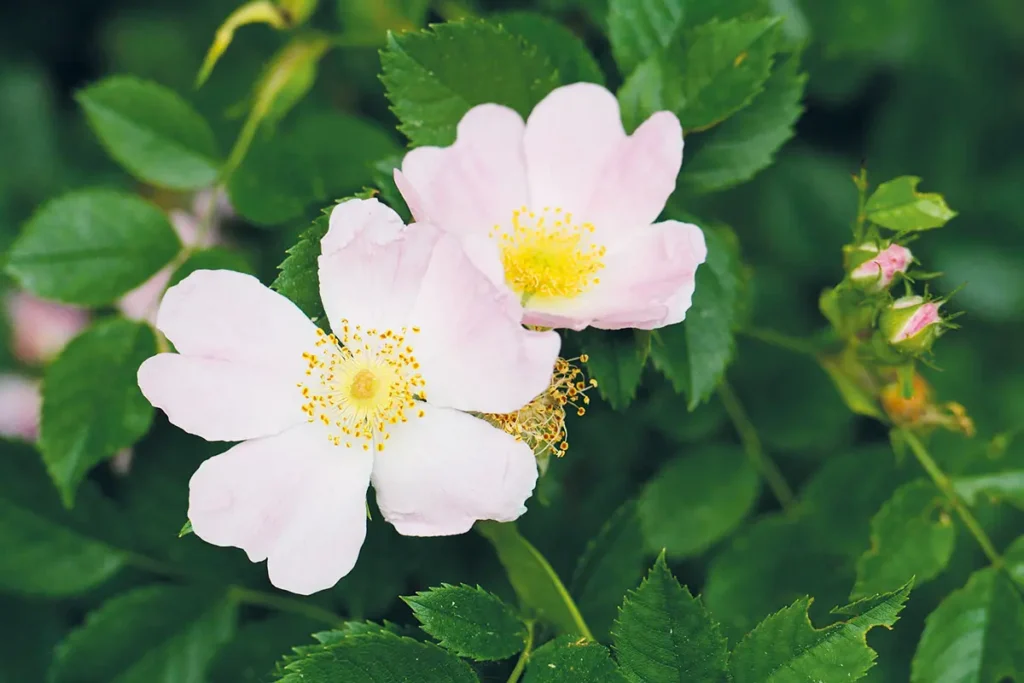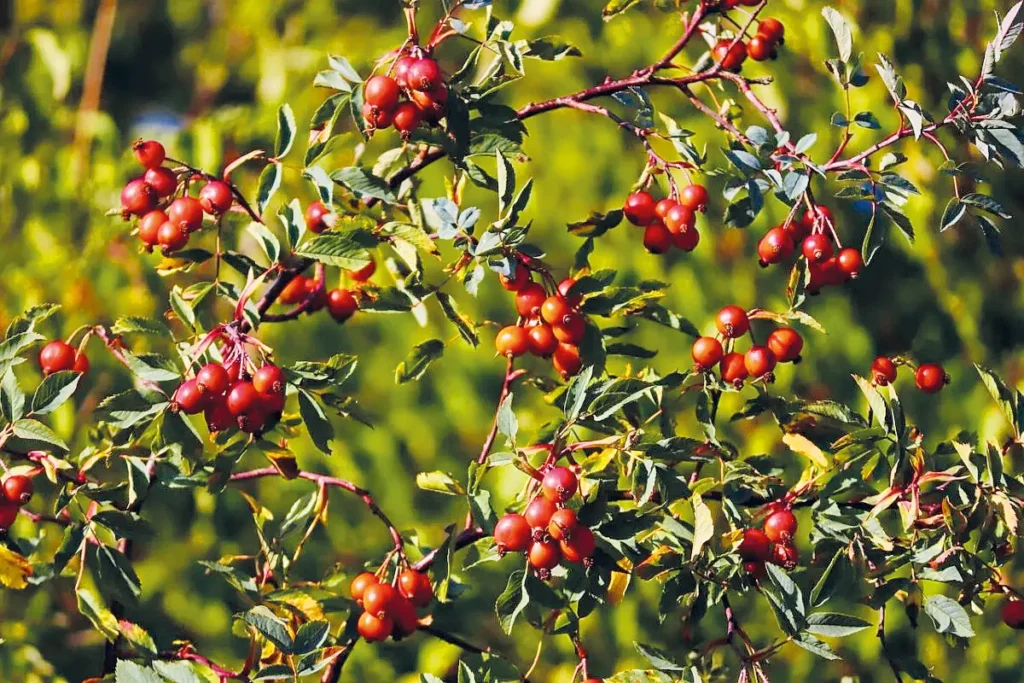


Nome Italiano: Rosa canina
Nome scientifico: Rosa canina L.
Nome Gallurese: Rosa aresta
Descrizione:
La Rosa canina è un arbusto perenne, rampicante, spinoso, con fusti ramificati, che presentano spine arcuate e robuste. Le foglie sono costituite da 5-7 foglioline che possono essere ovali od ellittiche, con margine dentato che presentano tipiche stipole alla base. I fiori hanno grandi petali liberi e sono mediamente larghi 4-5 cm. Sono poco profumati e hanno un colore biancastro, tendente al rosa nella zona dei lobi. Le bacche maturano in ottobre-novembre, sono ovoidali e di colore rosso-arancio acceso.
Proprietà e usi:
Le bacche e le gemme di rosa canina hanno proprietà immunostimolanti, antinfiammatorie e antiossidanti. Le bacche hanno inoltre blanda azione diuretica e astringente. Le proprietà terapeutiche sono date dal fitocomplesso presente nella droga della pianta e costituito da vitamina C, acido malico, acido citrico, carotenoidi, pectine, tannini, flavonoidi e antociani.
Curiosità e miti:
È interessante notare come, nonostante l’importante simbologia ad essa associata, e nonostante sia antenata delle rose coltivate, sia stata definita “canina”, cioè “di nessun valore”. Tuttavia, alcuni studiosi ritengono che venne chiamata canina perché si riteneva che le sue radici potessero curare la rabbia procurata dai morsi dei cani. Nel linguaggio dei fiori, Rosa canina simboleggia la poesia e l’indipendenza. Gli usi di questa pianta sono i più vari: oltre ad essere un ingrediente eccezionale per la preparazione di marmellate, può essere impiegata per la realizzazione di composti in grado di accompagnare formaggi, salse con piatti a base di carne. I frutti vengono impiegati nella medicina popolare per trattare disturbi del tratto urinario e dei reni e come rimedio contro i reumatismi, contro il raffreddore e gli stati febbrili.

Italian name: Rosa canina
Scientific name: Rosa canina L.
Gallurese name: Rosa aresta
Description:
The Rosa canina is a perennial, climbing, thorny shrub with branched stems and strong, arching thorns. The leaves consist of 5-7 leaflets that may be oval or elliptical, with toothed margins and have typical stipules at the base. The flowers have large free petals and are on average 4-5 cm wide. They are not very fragrant and are whitish in colour, tending to pink in the lobe area. The berries ripen in October-November, are ovoid and bright orange-red in colour.
Properties and uses:
Rosehip berries and buds have immunostimulating, anti-inflammatory and antioxidant properties. The berries also have mild diuretic and astringent actions. The therapeutic properties are given by the phytocomplex present in the plant’s drug and consisting of vitamin C, malic acid, citric acid, carotenoids, pectins, tannins, flavonoids and anthocyanins.
Curiosities and myths:
Interestingly, despite the important symbolism associated with it, and despite the fact that it is the ancestor of cultivated roses, it has been called ‘canine’, i.e. ‘of no value’. However, some scholars believe that it was called canine because it was believed that its roots could cure rabies caused by dog bites. In the language of flowers, Rosa canina symbolises poetry and independence. The uses of this plant are the most varied: besides being an exceptional ingredient for the preparation of jams, it can be used to make compounds to accompany cheeses, sauces and meat dishes. The fruits are used in folk medicine to treat disorders of the urinary tract and kidneys and as a remedy against rheumatism, colds and febrile states.
